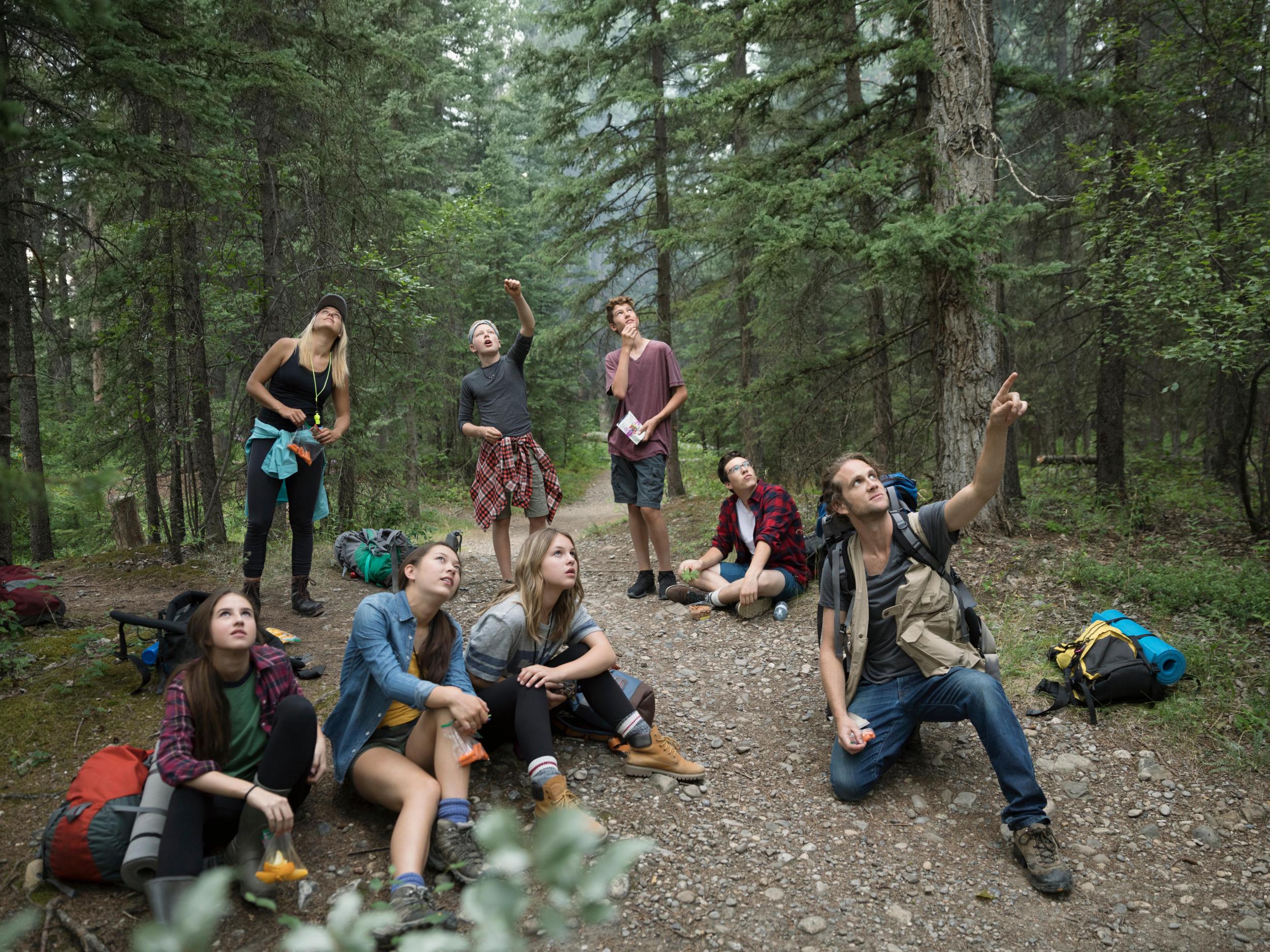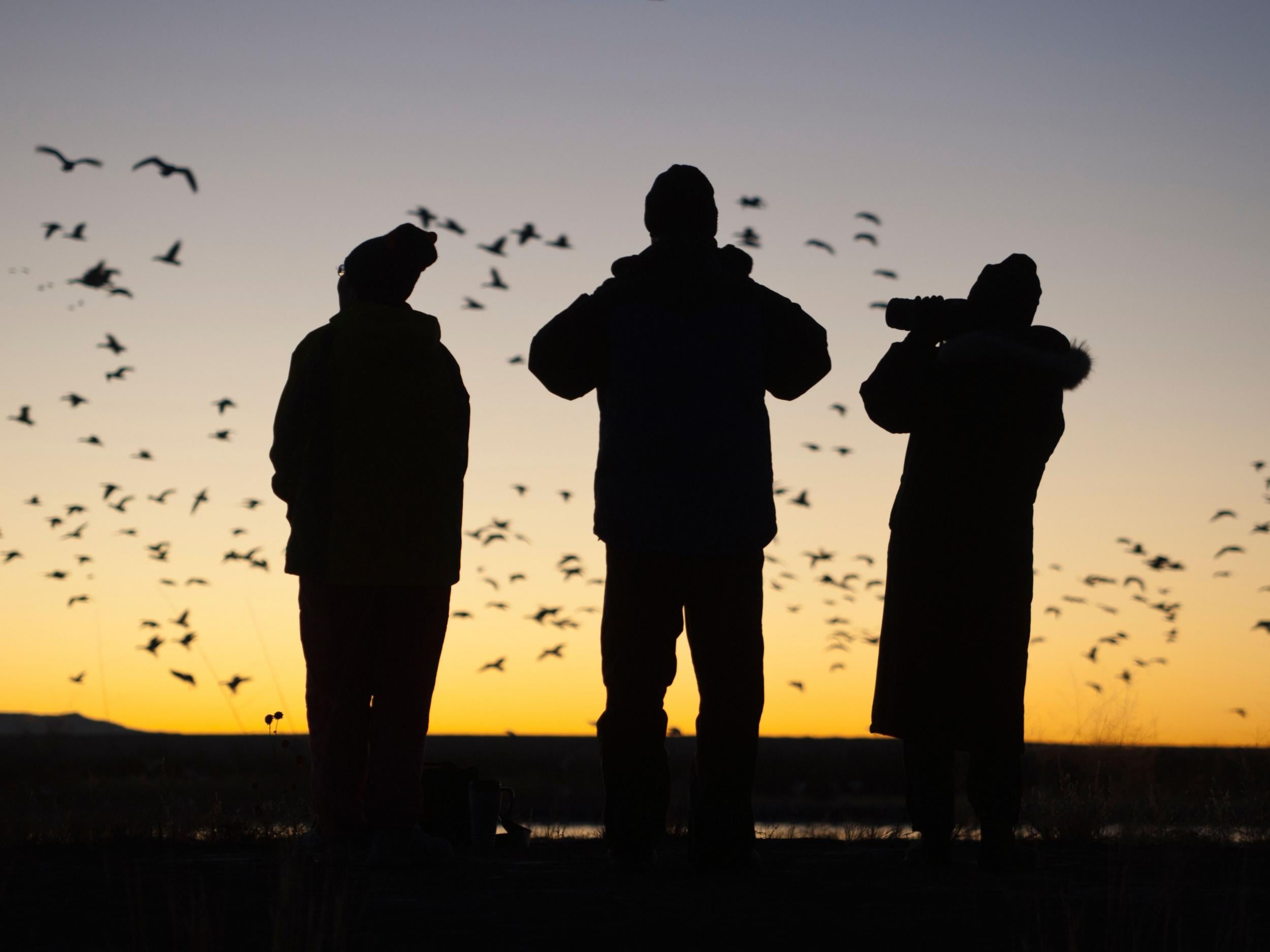The world of young urban birders: Community, activism and Instagram
The birds come, the birds go. All that changes is the pecking order. Penelope Green meets the new breed of birders using apps and social media to track their ornithological marks

On Global Big Day last month, birders around the world counted all the species they could spot in 24 hours.
It was a super-birding event in the bonanza that is spring migration – which runs from late April to early June, but peaks for songbirds in May – when millions of birds make their way from parts south to breed in the northern latitudes.
In Prospect Park, members of the Feminist Bird Club did their bit for this enormous citizen-scientist data collection effort. Led by Molly Adams, its founder, the group clocked more than 80 species in less than 10 hours, including one black-billed cuckoo and a cerulean warbler.
These are good “gets”: the cerulean warbler is at risk of extinction – like so many birds, a casualty of habitat loss – so noting its whereabouts is particularly important for conservation efforts.
The cuckoo is not a rare bird, it’s just hard to see and not many of them stop in New York City during their migration; that makes its sighting a bit of thrill, Adams says.
“We are seeing lots of males today,” she says, “because they are the first to arrive and establish territory. We’re not just excluding females here.”
She shows off her club’s iron-on patch, an embroidered spotted sandpiper, known for practising polyandry (yours for a donation of $10 (£7.55) or more; the proceeds go to Black Lives Matter), and promises a female-bird-only walk sometime in the future.

(Adams’ backpack is embellished with an “I Love Vultures” button, among other bird pins, but no patch because she does not own an iron.)
Although Adams, who is 28 and the outreach coordinator at the New York Aquarium, would certainly describe herself as a feminist, and her club’s manifesto reads, in part, that it is “dedicated to providing a safe opportunity to connect with the natural world in urban environments and having an ongoing conversation about intersectionality, activism and the rights of all women, non-binary folks, and members of the LGBTQ+ community”.
This is not a dogmatic crowd, nor is it mono-gendered. The talk is of birds, not humans. Among the 15 or so attendees, there are semi-novices, sharp-eyed experts and total newbies.
“Look, there’s a rubber-soled black bike shoe,” says Michael Silber, 36, a graphic designer.
“I already had that on my list,” says Chelsea Lawrence, 28, a software tester for a television company.
Younger urban birders – yubbies? – like those led by Adams are the new faces in the birding world.
They use social media to track their ornithological marks, with digital assists from apps like Ibird or Merlin and websites like ebird – the data collection site run by the Cornell Lab of Ornithology – which have replaced old-fashioned Sibley guides to aid in identification (although Sibley has an app, too).
They are drawn in by the visual seductions of Instagram, as well as a desire for a community inflected by environmentalism.
As Jonathan Franzen, still the literary world’s most famous birder, discovered, many soon find that without the structure of birding, “the stimulations of nature”, as Franzen wrote in “My Bird Problem,” his coming-out-as-a-birder essay in The New Yorker, remain “stubbornly theoretical, like sex on Prozac”.
We didn’t know how to interact with nature in the city, and now we have a sort of purpose
They also keep up to date with Twitter, now abuzz with local bird alerts. David Barrett, 54, a hedge fund manager turned computer scientist, is the creator of several of New York City’s Twitter bird alerts, marvels of near instantaneous crowdsourced data.
He is also the author of the birding memoir A Big Manhattan Year, in which he details his 2012 battle with Andrew Farnsworth, a noted ornithologist and birding record setter, to see the most species in a single year.
Bird documentaries – like The Messenger out in 2015; Birders: The Central Park Effect, out in 2012, and Emptying the Skies, out the following year – have also been minting new birders, and making environmentalists out of them, as an Inconvenient Truth once did.
Pete Lengyel, a cofounder of the Kings County Brewers Collective, a craft beer brewery and tap room in Brooklyn, was hooked by Birders when he saw it a few years ago.
Its filmmaker, Jeffrey Kimball, an urban birding convert, captured four seasons of Central Park’s birding community in an engaging portrait of its singular characters.
There’s Starr Saphir, the flinty matriarchal figure who led birders even as she became significantly ill with cancer, and Chris Cooper, 55, a biomedical editor who birds by ear (using birdsong to identify his quarry) and whose exposition on what he called the “7 pleasures of birding” pops up all over the internet.
Lengyel, 44, sent the film to all his friends and convened his own birding group, the Beerders, which includes two brewers, a baker, a butcher and a fashion designer – a nice cross-section of Brooklyn professions.
“We didn’t know how to interact with nature in the city, and now we have a sort of purpose,” he says, adding that they don’t go out too early, as the practices of his profession keep him from being a dawn riser. Cooper’s “7 pleasures” is a touchstone for his own birding passion.
“No 3 is the joy of hunting without bloodshed,” says Lengyel, a former Marine. “I got a camera early on to capture images, and I feel like I’m carrying a rifle around. The joy of collecting is No 4. I’m still looking for a prothonotary warbler.”
He screened Birders and The Messenger at the Brewers Collective this past year, in a collaboration with the New York City chapter of the National Audubon Society. The Messenger, which chronicles songbird decline, left some in the audience in tears, he said.
This fall, the bar will brew a beer called Safe Flight, an easy-drinking IPA with notes of citrus and pines (its sales will aid Audubon).
Over the past few decades, as David Ringer, 34, chief network officer at Audubon, points out, cities have focused on creating more green spaces, making parks safer and making sure that all communities have better access to nature. “You see with these efforts a corresponding rise in birding,” he says.

Lawrence, the software tester on Adams’ Feminist Bird Club walk, says that her “spark” bird – bird vernacular for the bird that hooks you like a gateway drug – was an American coot, spotted two years ago in Prospect Park.
“It was so weird looking,” she says. “I had to go home and figure out what it was.” Now, armed with an old-school (bound, paper) Sibley, a trifold raptor guide and an app or two, she can easily separate the coots from the grebes.
She might spend half a Saturday in Prospect Park, but if she spots a warbler at lunchtime in the planter in front of her midtown office, “that’s birding, too” she says. “I’m really into citizen science and data collection.
It can be as competitive as you want it to be. It’s also really meditative. You have to be very present to be a good birder
“It can be as competitive as you want it to be. It’s also really meditative. You have to be very present to be a good birder.”
Audubon’s market research has identified 9 million people between the ages of 18 and 35, Ringer says, “who share that blend of an interest in birds and environmental activism. Twenty five per cent are Hispanic, 18 per cent are African-American and 10 per cent are Asian-American. It’s an amazing representation of the demographics of the country.”
“I think it’s a short path from the joy and wonder of birds to the recognition of what they’re telling us about the environment, and what that compels us to do,” he says.
It was after dusk on 11 September a couple of years ago when Annie Novak, 35, an urban farmer, writer and educator at the New York Botanical Garden – once voted the cutest organic farmer in the country – became a birder.
She was tending to a rooftop garden overlooking the Tribute in Light, the annual memorial in lower Manhattan, when she noticed thousands of flickering shapes in the beams. “I thought they were bats,” she says, “but was amazed to learn they were nocturnally migrating songbirds.”
Since that night, she’s been researching a book about night migration and the conservation challenges facing bird populations.

She now volunteers for New York City Audubon, including for its annual monitoring programme at the Tribute in Light, which pulls thousands of birds off course, putting them at risk of injury and exhaustion.
(Volunteers assist with counting birds entrained in the beams. When more than a thousand are counted, the lights are turned off for 20 minutes, allowing the birds to disperse and fly on.)
“These species of birds have been flying over Manhattan for thousands of years,” she says. “There is more and more evidence that artificial light at night impacts these patterns of movement.”
“It’s bittersweet to stand on the observation deck of the Empire State Building at night and watch migratory birds, lured in by city lights, circle the spire. It makes you realise how alive the night sky is above the city that never sleeps, which is why I don’t sleep much anymore.”
A taxonomy of birders, says Cooper, mirrors that of the birds. “Every year, you see the same species, but the experiences are different.”
Cooper notes new stars like Jacob Drucker, once an elfin teenager whose skills are now off the chart; veterans, like Roger Pasquier, a long-tenured “Jedi master” in Cooper’s estimation, and Lee, a homeless woman who joined their ranks some years ago.
“She watched us watching the birds, and asked what we were doing and someone gave her a pair of binoculars,” Cooper says. “We’re all obsessed, but in our own ways.”
© New York Times
Join our commenting forum
Join thought-provoking conversations, follow other Independent readers and see their replies
Comments
Bookmark popover
Removed from bookmarks